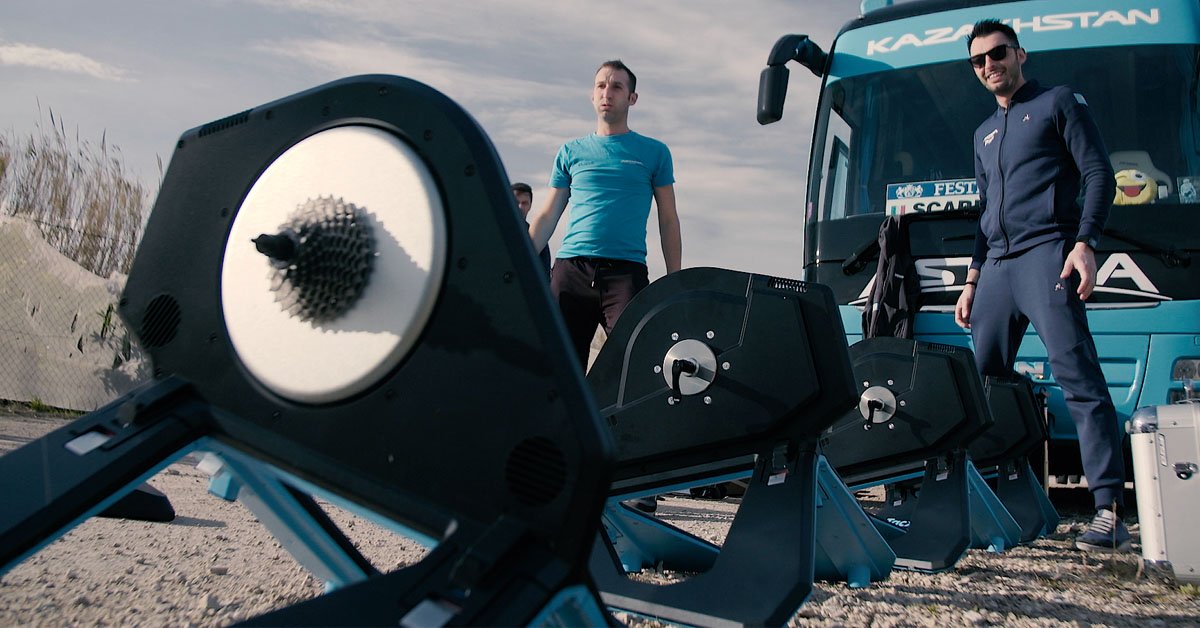
Train Like a Pro: Train Polarized
When it comes to cycling, functional threshold power (FTP), also known as the anaerobic threshold, is often seen as the ultimate performance indicator. FTP refers to the maximum power output you can maintain for 1 hour. Like many aspects of performance, it is possible to test, train and improve your FTP. Your power or heart rate at the anaerobic threshold is also used to calculate training zones you can use to gauge your workouts. Many riders strive to improve their FTP to ride faster, further, fatigue less, recover better and become a better all-around cyclist.
Two thresholds?
At first sight it makes sense that in order to improve your FTP, you simply have to train at FTP. A lot. But that mindset is a bit oversimplified and is certainly not the only way to do it. To clarify, we first need to explain a few basic principles. When exercise intensity increases, it places more and more emphasis on the anaerobic system because the aerobic system can’t produce enough energy to cycle at the increasing power. Therefore, there is more lactate produced when intensity increases.
So the first threshold is not actually your FTP. In fact, it’s a bit lower than that threshold where we see a clear increase in lactate above resting levels (often set at 2 mmol of lactate). This first physiological marker is referred to as the aerobic threshold. The second one is the anaerobic thresholdor FTP. This is the point at which the production of lactate is in balance with the removal or buffering of lactate. This is the maximum intensity at which your body is in a steady state; therefore, FTP is defined as the intensity you can sustain for 60 minutes. While there are big individual factors that can cause variations from person to person, we assume FTP is a good estimation of the maximum lactate steady state.
Using these two thresholds, it’s possible to use the three-zone model that is found in scientific studies about intensity distribution. These zones are below the aerobic threshold, between aerobic and anaerobic threshold, and above the anaerobic threshold.
Polarized Training Distribution
In retrospect, studies noticed a remarkable finding: In a lot of endurance sports such as cycling, running, swimming, rowing, and even cross-country skiing, elite athletes don’t train very often at their FTP. Instead, the pros have what is called “polarized training distribution.” This means that they tend to do a lot of training below the aerobic threshold and some training above the anaerobic threshold — and almost no training in between the zones, at their FTP. In fact, almost 80% of their training was done at a low intensity (below the aerobic threshold) and around 10-20% of the training took place above the anaerobic threshold using hard interval training.
After this finding was first discovered, a lot of new studies took a deeper dive into typical training intensity distribution and its effectiveness. This was done in many endurance sports and at all levels. Interestingly enough, almost all outcomes suggested that even recreational athletes saw the biggest improvements in their FTP when training 6 hours a week with the polarized distribution, rather than training between the two thresholds.
Why is this? Because exercising at your FTP is very fatiguing, but because you’re not recruiting all your muscles and your heart and lung systems aren’t at their max capability, the training stimulus is less intense than exercising above the anaerobic system.
The lesson you should take home from this is that to improve your FTP, you must look at the intensity distribution of your workouts. Many recreational cyclists find themselves in a rut because they’re taking their easy workouts too hard and their hard workouts too easy. So to train like a pro, make sure your training is polarized enough to improve your FTP.
By Jim Van Den Berg, a former semiprofessional cyclist and team manager of the continental cycling team Delta Cycling.
The information provided through our blog is not intended to be and is not a substitute for professional medical advice, diagnosis or treatment that can be provided by your own health care professional. Garmin makes no attempt to diagnose, treat or cure any physical ailment, or any mental or emotional issue, disease or condition. Our blogs are intended to help you reach your own health and wellness goals.





